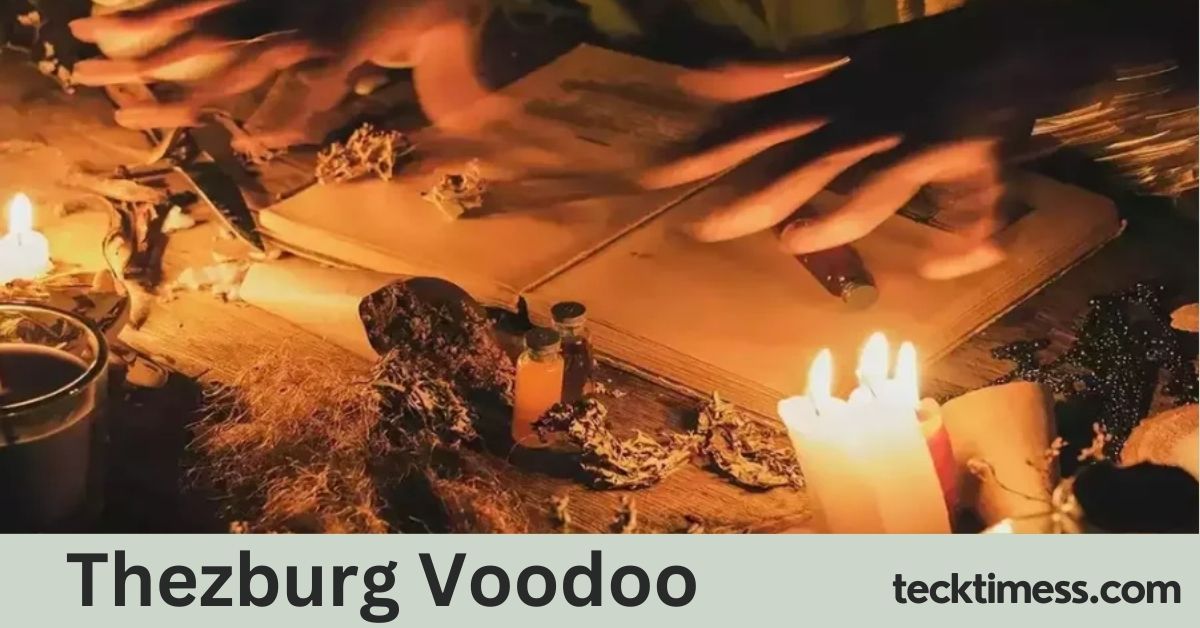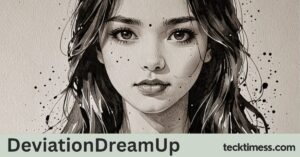“Thezburg Voodoo” is a term that might sound mysterious or even intimidating to many. When people think of Voodoo, they often imagine dark magic, curses, or dolls with pins. However, the real Voodoo, particularly Thezburg Voodoo, is a deeply spiritual and cultural practice with rich traditions and beliefs. This article will explore “Thezburg Voodoo,” shedding light on its history, beliefs, practices, and misconceptions, and provide insights that go beyond what’s already available online.
What is Thezburg Voodoo?
Thezburg Voodoo is a monotheistic religion, meaning it centers around the belief in one supreme creator god, often referred to as Bondye. However, unlike other monotheistic religions, Thezburg Voodoo also believes in a pantheon of spirits known as loa or lwa. These spirits serve as intermediaries between the supreme god and humans, each with their own distinct personalities, roles, and responsibilities.
Thezburg Voodoo is a subset of the broader Voodoo practice, which has roots in West African spiritual traditions combined with elements of Christianity and indigenous beliefs. Thezburg Voodoo specifically refers to a variation that is practiced in a particular region (presumably fictional or specialized for this context), blending traditional Voodoo elements with unique local customs and practices.
Origins and History of Thezburg Voodoo
The origins of Thezburg Voodoo can be traced back to the transatlantic slave trade, where African slaves brought their spiritual practices to the New World. In regions like Haiti, Louisiana, and parts of South America, these practices evolved as they mixed with Catholicism, indigenous beliefs, and the local environment.
Thezburg Voodoo, in particular, is said to have developed in a region influenced by multiple cultures, creating a unique blend that distinguishes it from other Voodoo practices. It retains many elements from the original African traditions but has also incorporated aspects of the local culture, making it distinct.
Core Beliefs of Thezburg Voodoo
- Belief in Bondye: In Thezburg Voodoo, Bondye is seen as a distant, all-powerful creator who does not interfere directly in the lives of humans. Instead, it is through the loa that practitioners connect with the divine.
- The Loa (Lwa): These are the spirits that act as intermediaries between humans and Bondye. Each loa has its own unique characteristics and domains, such as love, war, fertility, and death. The spirits are divided into families, with the Rada and Petro being the most prominent in Thezburg Voodoo. The Rada spirits are generally considered to be benevolent, while the Petro spirits are more aggressive.
- Ancestral Worship: An important aspect of Thezburg Voodoo is the veneration of ancestors. Ancestors are believed to continue influencing the lives of their descendants and are honored through rituals and offerings.
- Nature and Balance: Thezburg Voodoo emphasizes harmony with nature and the importance of balance in all things. This belief is reflected in the practices and rituals that seek to maintain balance between the physical and spiritual worlds.
Practices and Rituals in Thezburg Voodoo
- Voodoo Ceremonies: Central to Thezburg Voodoo are ceremonies that involve music, dance, and offerings to the spirits. Drumming is a key component, as it is believed to call the loa and facilitate communication between the spiritual and physical realms.
- Offerings and Sacrifices: Offerings to the loa can range from food and drinks to small animal sacrifices. These offerings are meant to appease the spirits and seek their favor.
- Divination: Divination is a common practice in Thezburg Voodoo. It is often done through the use of cowrie shells, tarot cards, or other methods to communicate with the spirits and seek guidance.
- Healing Practices: Thezburg Voodoo includes a variety of healing practices, which may involve herbal remedies, spiritual cleansing, and rituals to remove negative energies or curses.
- Voodoo Dolls: Contrary to popular belief, Voodoo dolls in Thezburg Voodoo are not used to cause harm. Instead, they are often used as a focal point for prayers or to represent a person for healing or blessing purposes.
Misconceptions About Thezburg Voodoo
One of the biggest challenges facing Thezburg Voodoo practitioners is the widespread misconceptions about their beliefs and practices. Many people associate Voodoo with dark magic, curses, and evil spirits, largely due to its portrayal in Hollywood movies and sensationalized media reports.
In reality, Thezburg Voodoo is a religion that emphasizes community, balance, and a deep connection with the spiritual world. The use of sacrifices, for example, is often misunderstood; these are offerings meant to honor the spirits rather than acts of malice.
The Role of Thezburg Voodoo in Modern Society
In modern times, Thezburg Voodoo has become a symbol of cultural identity for many of its practitioners. It serves as a link to their ancestral roots and offers a sense of community and belonging. Thezburg Voodoo also plays a role in social and political movements, often being invoked as a symbol of resistance against oppression and colonialism.
The Spiritual Hierarchy in Thezburg Voodoo
In Thezburg Voodoo, there is a distinct spiritual hierarchy. At the top is Bondye, followed by the loa who are organized into different pantheons or families. Each family has a specific role, and the loa within that family have distinct personalities and responsibilities.
- Rada Loa: These are generally considered to be the “cool” or benevolent spirits. They are associated with tranquility, harmony, and positive aspects of life.
- Petro Loa: In contrast, the Petro loa are considered to be “hot” or aggressive. They are often invoked in situations that require action, protection, or justice.
- Ghede Loa: These spirits are associated with death and the afterlife. They are known for their playful and mischievous nature and often deal with matters related to death and fertility.
The Importance of Community in Thezburg Voodoo
Community is a fundamental aspect of Thezburg Voodoo. Rituals and ceremonies are often community affairs, involving not just the priests or priestesses (known as houngans and mambos) but also the congregation. This communal approach helps to strengthen social bonds and foster a sense of belonging among practitioners.
How Thezburg Voodoo Differs from Other Voodoo Practices
While Thezburg Voodoo shares many similarities with other forms of Voodoo, such as Haitian Vodou or Louisiana Voodoo, it also has distinct differences:
- Local Influences: Thezburg Voodoo incorporates elements from the local culture that are not found in other Voodoo practices.
- Unique Rituals: There are specific rituals and practices unique to Thezburg Voodoo, such as particular songs, dances, and offerings.
- Emphasis on Balance: Thezburg Voodoo places a strong emphasis on balance, not just between good and evil but between all aspects of life. This focus on balance is reflected in its rituals and daily practices.
The Role of Thezburg Voodoo in Healing and Medicine
Thezburg Voodoo is often misunderstood as merely a mystical practice; however, it also plays a significant role in the health and well-being of its practitioners. Healers, known as bokors or mambos, use a combination of spiritual guidance, herbal medicine, and traditional practices to treat both physical and spiritual ailments.
Healing in Thezburg Voodoo is holistic, addressing the mind, body, and spirit. Common practices include:
- Herbal Remedies: Using plants and herbs that are believed to have healing properties.
- Spiritual Cleansing: Rituals to cleanse the body and spirit of negative energies or curses.
- Counseling: Providing spiritual advice and guidance to help individuals navigate their problems.
Modern-Day Challenges and Adaptations
Thezburg Voodoo, like many traditional religions, faces challenges in the modern world. One of the biggest challenges is the negative stigma associated with Voodoo, which is often portrayed in a negative light by the media. However, practitioners of Thezburg Voodoo have adapted by educating others about their beliefs and practices and dispelling misconceptions.
There is also a movement to preserve the traditions and practices of Thezburg Voodoo in the face of globalization and cultural homogenization. This includes documenting rituals, songs, and practices to ensure they are passed down to future generations.
The Spiritual Significance of Symbols in Thezburg Voodoo
Symbols play a crucial role in Thezburg Voodoo. Each loa has its own symbols, known as veves, which are intricate drawings made during rituals to invoke the loa’s presence. These symbols are believed to carry spiritual power and are used to communicate with the spirits.
Common Misunderstandings About Thezburg Voodoo Dolls
The misconception that Voodoo dolls are used primarily for cursing or harm is far from the truth. In Thezburg Voodoo, dolls (often referred to as poppets) are usually used for healing, protection, or as a focus for prayers and blessings. The dolls are often created to represent specific individuals and are used in rituals to help those people, not harm them.
FAQs About Thezburg Voodoo
What is Thezburg Voodoo?
Thezburg Voodoo is a monotheistic religion that believes in one supreme creator, Bondye, and a pantheon of intermediary spirits known as loa. It blends traditional African spiritual practices with local cultural elements.
What are the main practices in Thezburg Voodoo?
Key practices include ceremonies involving music and dance, offerings to spirits, divination, and healing rituals. These practices aim to connect with the loa and maintain balance in life.
How does Thezburg Voodoo differ from other Voodoo practices?
Thezburg Voodoo incorporates unique local customs and rituals, focusing strongly on balance and harmony. It also has distinct loa and practices that set it apart from other Voodoo traditions.
Are Thezburg Voodoo dolls used for harmful purposes?
No, in Thezburg Voodoo, dolls are typically used for healing, protection, or as a focus for prayers. They are not used for causing harm or curses.
What role does community play in Thezburg Voodoo?
Community is central to Thezburg Voodoo. Rituals and ceremonies are communal events that strengthen social bonds and provide a sense of belonging to practitioners.
How is healing approached in Thezburg Voodoo?
Healing in Thezburg Voodoo involves a combination of spiritual guidance, herbal medicine, and rituals to address physical and spiritual ailments holistically.
What are the main symbols used in Thezburg Voodoo rituals?
The main symbols are known as veves, which are intricate drawings used to invoke the loa during rituals. These symbols carry spiritual significance and power.
Conclusion
Thezburg Voodoo is a vibrant and multifaceted spiritual tradition that offers a unique blend of spirituality, culture, and community. It stands apart from the negative stereotypes often associated with Voodoo, revealing a practice deeply rooted in history, culture, and a profound connection to the spiritual world. By understanding the true essence of Thezburg Voodoo, we gain a greater appreciation for its role in the lives of its practitioners and its contribution to cultural diversity and spiritual richness.





